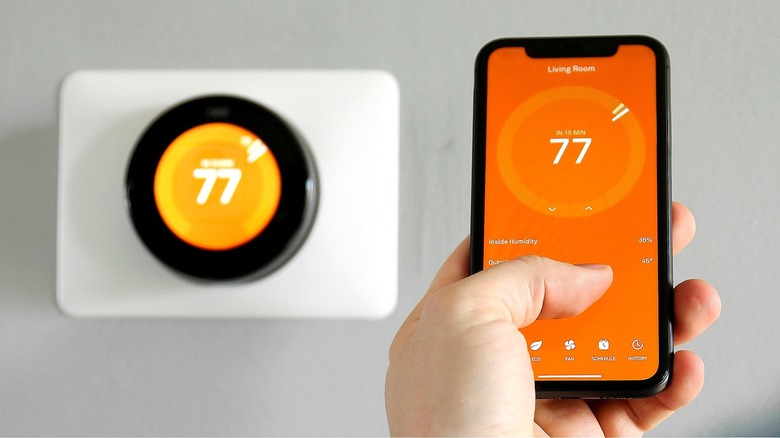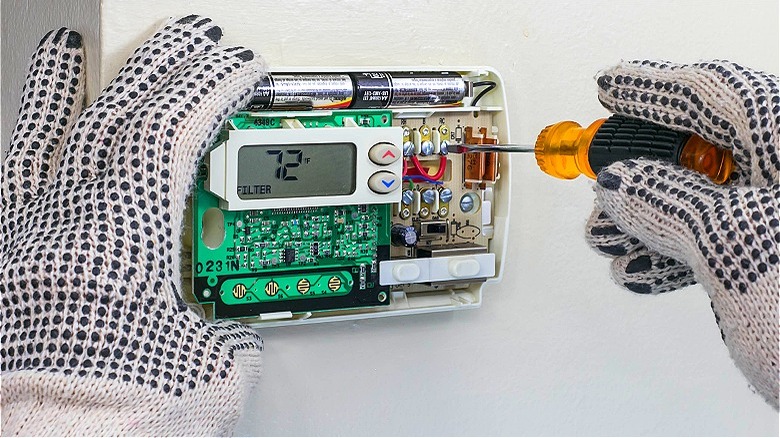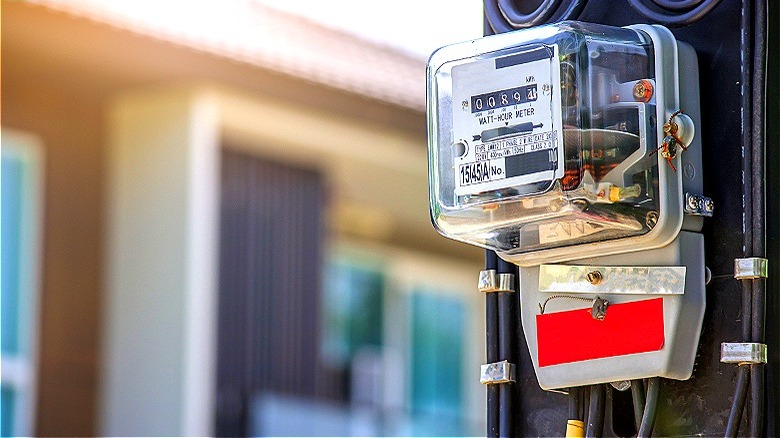Do Smart Thermostats Actually Save You Money?
When it comes to cooling or heating your home, it only stands to reason that it's wasteful to do so when the residence is empty of occupants. Hardly a new development, the programmable thermostat, which combines a conventional thermostat with a clock, was introduced more than 100 years ago to address this dilemma, with digital versions surfacing in the 1980s. More recently, so-called smart thermostats have taken the home market by storm and, yes, they put their Reagan-era programmable counterparts to shame. At a minimum, smart thermostats connect to Wi-Fi or to Z-Wave (a wireless network for smart home devices), which allows remote operation from a smartphone app and/or voice commands via assistants like Alexa or Siri.
This smart device unquestionably delivers convenience to its users; for one, it allows you to adjust your thermostat from anywhere. For example, say, you're away on vacation (which you should avoid spending more than this much of your income on), but you forgot to adjust your home's temperature before leaving. With a smart thermostat installed, correcting this oversight is as easy as a few taps on your phone. Convenience aside, though, can smart thermostats lower energy bills enough to pay for themselves in a reasonable period of time? Let's take a look.
How much do smart thermostats cost, anyway?
To begin with, let's examine the cost of upgrading to a smart thermostat. Well-known brands like Nest from Google or Ecobee start at about $130 to $150 at big-box retailers and online, though less-expensive options, like from Amazon's house brand, do exist. That said, it's not difficult to drop $200 or more on particularly feature-rich models, either. Those extra features could include additional sensors to measure the temperature in different rooms, as well as moisture and carbon-dioxide detectors that can warn of a dangerous plumbing leak or poor air quality.
The installation of a new thermostat (smart or otherwise) isn't terribly difficult and should be within the realm of most reasonably handy do-it-yourselfers. However, you'll want to turn off power to the air conditioner or furnace via the unit's circuit breaker prior to beginning. There's no high-voltage wiring involved with swapping a thermostat, but an inadvertent short circuit could possibly damage the HVAC equipment. If you're truly uncomfortable tackling the install, expect to pay a professional an average of about $200, according to Forbes.
Besides the ability to be controlled remotely and/or with voice commands, certain smart thermostats will also sense when you're home via an occupancy sensor. For instance, if your schedule throws you a curve and you're home when you're normally not (or vice versa), the thermostat will know and adjust accordingly. A real-world example would be going to an impromptu restaurant dinner after work rather than straight home. A capable smart thermostat will automatically sense that nobody is home when they should be and delay regulating the temperature versus manually tweaking the settings via your smartphone app.
Yes, you'll save with a smart thermostat
So, should you invest in a smart thermostat? According to Energy Star, upgrading to a smart thermostat certified by that organization could save you up to approximately $100 per year. And with utility costs seemingly rising in perpetuity, that savings could grow even larger in the future. Besides optimal HVAC settings, you'll also want to check out Money Digest's other suggestions to save money on your electric bill.
Additional savings from a smart thermostat may also be available from your local power company. Increasingly, utility providers are offering enrollment in programs that grant the company control over your smart thermostat to schedule heating and cooling to avoid peak periods, like in the early evening right after work. In exchange, customers that choose to enroll may receive a sign-up bonus worth $50 to $75 and/or an annual incentive of $20 to $40 per year, though you'll want to verify the particulars with your exact provider.
In a nutshell, if you still have a basic, non-programmable thermostat, you should upgrade to, well, something. Name-brand, programmable digital thermostats sell for as little as $25 to $30 online and in home improvement stores. If you have a fairly regular home-and-away schedule that changes infrequently, you may find that a non-smart programmable thermostat is sufficient for your needs.
That said, smart thermostats aren't prohibitively more expensive than programmable types and will pay for themselves fairly quickly, then deliver energy savings for years afterward. If you think about it that way, all of the other convenience and technology that these devices deliver is basically free – the proverbial icing on the cake.


